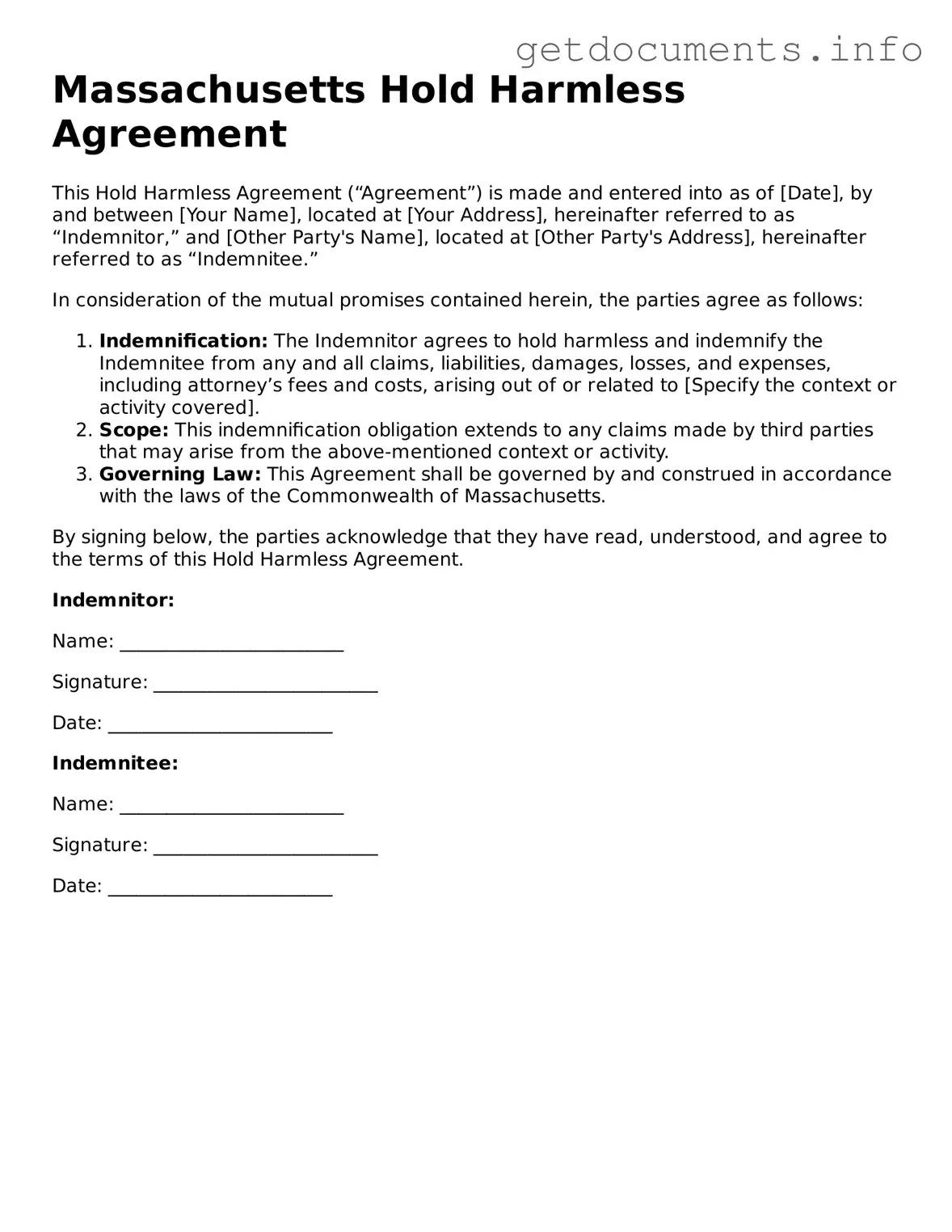Free Hold Harmless Agreement Template for Massachusetts
The Massachusetts Hold Harmless Agreement is a legal document designed to protect one party from liability for potential damages or injuries that may occur during a specific activity or event. By signing this agreement, individuals or organizations agree to assume responsibility for any claims that may arise, ensuring that the other party is not held accountable. Understanding this form is crucial for anyone looking to engage in activities where liability could be a concern.
If you’re ready to take the next step, fill out the form by clicking the button below!
Access Hold Harmless Agreement Editor
